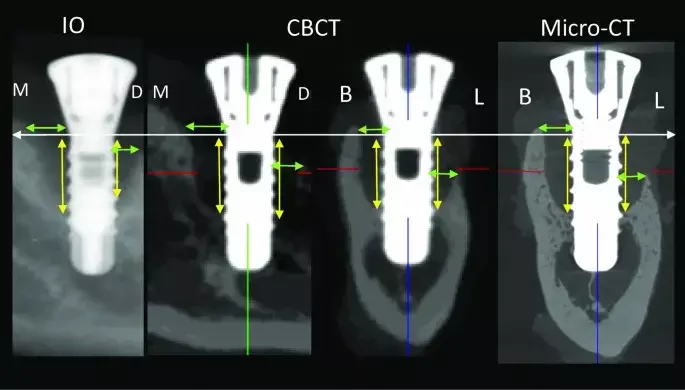- Home
- Medical news & Guidelines
- Anesthesiology
- Cardiology and CTVS
- Critical Care
- Dentistry
- Dermatology
- Diabetes and Endocrinology
- ENT
- Gastroenterology
- Medicine
- Nephrology
- Neurology
- Obstretics-Gynaecology
- Oncology
- Ophthalmology
- Orthopaedics
- Pediatrics-Neonatology
- Psychiatry
- Pulmonology
- Radiology
- Surgery
- Urology
- Laboratory Medicine
- Diet
- Nursing
- Paramedical
- Physiotherapy
- Health news
- Fact Check
- Bone Health Fact Check
- Brain Health Fact Check
- Cancer Related Fact Check
- Child Care Fact Check
- Dental and oral health fact check
- Diabetes and metabolic health fact check
- Diet and Nutrition Fact Check
- Eye and ENT Care Fact Check
- Fitness fact check
- Gut health fact check
- Heart health fact check
- Kidney health fact check
- Medical education fact check
- Men's health fact check
- Respiratory fact check
- Skin and hair care fact check
- Vaccine and Immunization fact check
- Women's health fact check
- AYUSH
- State News
- Andaman and Nicobar Islands
- Andhra Pradesh
- Arunachal Pradesh
- Assam
- Bihar
- Chandigarh
- Chattisgarh
- Dadra and Nagar Haveli
- Daman and Diu
- Delhi
- Goa
- Gujarat
- Haryana
- Himachal Pradesh
- Jammu & Kashmir
- Jharkhand
- Karnataka
- Kerala
- Ladakh
- Lakshadweep
- Madhya Pradesh
- Maharashtra
- Manipur
- Meghalaya
- Mizoram
- Nagaland
- Odisha
- Puducherry
- Punjab
- Rajasthan
- Sikkim
- Tamil Nadu
- Telangana
- Tripura
- Uttar Pradesh
- Uttrakhand
- West Bengal
- Medical Education
- Industry
Cone beam computed tomography better for tintraoral radiography for evaluating Peri implant bone defect

The importance of radiology in assessing the bone around the implants is undeniable. In this sense, postoperative radiographic evaluation of dental implants and the advantages and disadvantages of different radiographic modalities are important
Cone beam computed tomography (CBCT) is better for tintraoral radiography for evaluating Peri implant bone defect suggests a new study published in the Oral Radiology
The objective of this work was to perform an integrative review of the inspection of peri-implant bone defects using cone beam computed tomography (CBCT). An electronic search was performed in the PubMed database using the following scientific terms: CBCT or Cone Beam computed tomography; dental implant; peri-implant; bone loss; defects. The survey identified 267 studies, of which 18 were considered relevant to this study. These studies provided important data taking into account the accuracy of cone beam computed tomography in the detection and measurement of peri-implant bone defects such as fenestrations, dehiscence and intraosseous circumferential defects. The effectiveness of CBCT in aiding in geometric bone calculations and in the diagnosis of peri-implant defects was influenced by factors such as artefacts, defect size, bone wall thickness, implant material, adjustment of acquisition parameters and observer experience. A not insignificant number of studies compared intraoral radiography to CBCT in the detection of peri-implant bone loss. CBCT was clearly superior to intraoral radiography in the detection of all peri-implant bone defects, except for defects located in the interproximal zone. In general, studies have shown that peri-implant bone measurements adjacent to the implant surface can be correctly determined, as well as the diagnosis of peri-implant bone defects with an average discrepancy of less than 1 mm from the actual measurement of the defect.
Reference:
Costa, J.A., Mendes, J.M., Salazar, F. et al. Analysis of peri-implant bone defects by using cone beam computed tomography (CBCT): an integrative review. Oral Radiol (2023). https://doi.org/10.1007/s11282-023-00683-w
Keywords:
Costa, J.A., Mendes, J.M., Salazar, F, Oral Radiology, Analysis, peri-implant, bone, defects, using, cone, beam, computed, tomography, (CBCT), integrative review
Dr. Shravani Dali has completed her BDS from Pravara institute of medical sciences, loni. Following which she extensively worked in the healthcare sector for 2+ years. She has been actively involved in writing blogs in field of health and wellness. Currently she is pursuing her Masters of public health-health administration from Tata institute of social sciences. She can be contacted at editorial@medicaldialogues.in.
Dr Kamal Kant Kohli-MBBS, DTCD- a chest specialist with more than 30 years of practice and a flair for writing clinical articles, Dr Kamal Kant Kohli joined Medical Dialogues as a Chief Editor of Medical News. Besides writing articles, as an editor, he proofreads and verifies all the medical content published on Medical Dialogues including those coming from journals, studies,medical conferences,guidelines etc. Email: drkohli@medicaldialogues.in. Contact no. 011-43720751


